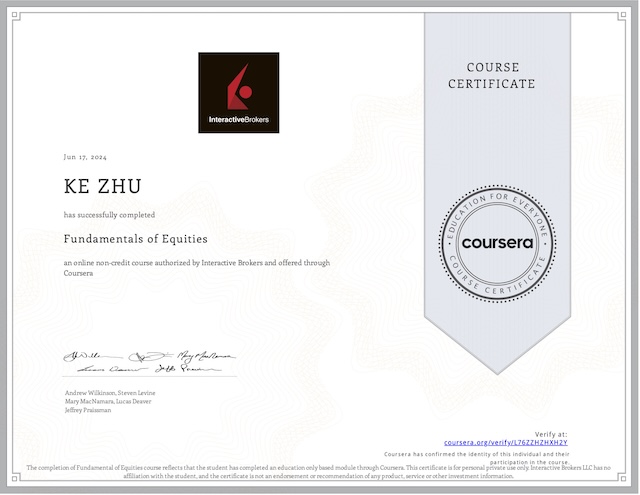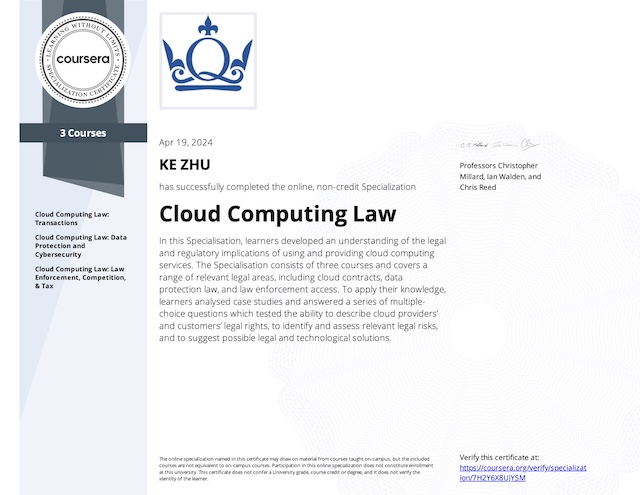Origin of Federal Taxation
The first income tax in the US was enacted in 1634 by the Massachusetts Bay Colony. The federal government however did not initially adopt this form of taxation; in part because it did not have the authority to do so. It was not until 1787 that Article 1 Section 8 Clause 1 of the US Constitution (known as the ‘spending clause’) granted the federal government its power to tax.
The Congress shall have the power to lay and collect Taxes, Duties, Imposts, and Excises to pay the debt and provide for the common Defense and general Welfare of the United States, but all Duties, Imposts and Excises shall be uniform throughout the United States.
Article 1 Section 8 Clause 1, US Constitution
With the start of the American Civil War, the government enacted an individual income tax in Revenue Act 1861, and repealed in 1872, after the Civil War. However the tax returned in Revenue Act 1894.
In 1895, in the case Pollock v. Farmers’ Loan and Trust Company, the US Supreme Court held that the unapportioned income taxes on interest, dividends and rents imposed by the Revenue Act 1894, were equivalent to direct taxes on the property involved. The taxes were ruled unlawful, because they violated the provision in the Constitution, requiring that direct taxes be uniform throughout the United States.
In 1090, the federal government enacted Corporate Tax Act, which was held to be constitutional because it was designed as an excise tax – a tax on the right to do business and the corporate form which was explicitly permitted by the Constitution.
In 1913, the 16th Amendment of the US Constitution was ratified, apportionment and uniformity were no longer requirements. The 16th Amendment is routinely cited as the genesis of the income tax.
The Hierarchy of Tax Law Sources
Authority is classified as either primary or secondary:
- Primary authority refers to the official sources of tax law.
- Secondary authority refers to non-official sources of tax law that constitute no real legal authority, such as newspaper articles or other commentaries.
Primary authority is ranked from highest to lowest in terms of whether it can be relied upon in practice, resulting in the U.S. Federal Tax Law hierarchy:
- U.S. Constitution
- Internal Revenue Code
- U.S Treasury Regulations
- Legislative History
- Judicial Authority
- Administrative Pronouncements
The 3 primary sources of tax law are:
| Statutory (Legislative branch) | 1. U.S. Constitution, Article 1, Section 7, 8 and 10 2. Tax Treaties 3. Internal Revenue Code (IRC) |
| Administrative (Executive branch) | 1. Regulations, official interpretation of IRC. 2. Revenue Rulings, indicating how the IRS will apply the tax law to a specific transaction or situation. 3. Revenue Procedures, dealing with internal practices and procedures of the IRS. 4. Letter Rulings, specific responses to tax-related inquiries. 5. Other pronouncements: Internal revenue bulletin, Field service advices, Chief counsel memoranda, Publications, etc |
| Judicial (Judicial branch) | 1. Administrative appeals process 2. Federal court system. Trial courts of original jurisdiction: U.S. Tax Court U.S. District Court U.S Court of Federal Claims Appellate courts: U.S Court of Appeals U.S. Supreme Court |
Judicial Doctrines
Federal courts routinely went beyond statutory language and formulated a set of doctrines that have become the common law of taxation. These doctrines are rather influential even though they are vague and imprecise.
- Sham Transaction doctrine
- A sham is defined as a transaction that never actually occurred, but as represented by the taxpayer to have occurred with favorable tax effects. They embody near fraudulent behavior.
- Economic Substance doctrine
- For a transaction to be respected for federal tax purposes, it must change in a meaningful way, apart from federal income tax effects, the taxpayer’s economic position. The taxpayer must have a substantial purpose, apart from the federal income tax effects, for entering into such transaction.
- Business Purpose doctrine
- Consider if a transaction has any economic substance, purpose, or utility other than tax avoidance.
- Step Transaction doctrine
- Encourages the courts to conceptually combine two or more transactions or steps to determine the taxation of the entire integrated series.
Business Organizational Forms
The tax and non-tax features strategically influence the organizational form you choose to conduct business. While other alternative forms do exist, these four business organizational forms are incredibly common.
Sole Proprietorship
A business owned and operated by one individual. It is not a separate legal entity apart from the individual owner.
Advantages:
- Simple to initiate and terminate
- The owner is ultimately responsible for every business decision.
Disadvantages:
- Owner has limited life but unlimited personal liability
- Be challenging to raise capital
Taxation:
The owner reports all business income and expenses on Schedule C of Form 1040.
Partnership
An association of two or more persons to carry on as co-owners of a business for profit. Joint venture is a related concept, which occurs when partnerships are formed for specific projects and transactions while retaining their individual identities.
Advantages:
- Sharing of responsibilities and risks
- Individuals and most businesses can be partners
Disadvantages:
- Partnership has limited life
- General partners are jointly and severally liable for the obligations of the business.
- Limited partners are not liable for debts, but can not actively manage the business.
Taxation:
Partners report their ratable share of net income on their own Form 1040, subject to special taxes and deductions.
A partnership files Form 1065, but pays no entity-level income tax.
Corporation
A corporation is a separate legal entity under state law. It has most of the same rights and responsibilities as individuals, and that it can enter into contracts,
own assets, incur debts, and litigate. The management responsibilities of a corporation are vested in the Board of Directors.
Advantages:
- Limited liability
- Perpetual life
- Ease of ownership and capital acquisition through transfer of stocks
Disadvantages:
- Centralized management
- Double taxation of income
Taxation:
Governed by either subchapter C or subchapter S of the Internal Revenue Code.
- C corporations
- Entity-level income tax
- Dividend payments non-deductible
- Shareholders pay tax on dividends
- File Form 1120
- S corporations
- No entity-level income tax
- Taxed like a partnership
- File Form 1120S
Limited Liability Company (LLC)
LLC is a hybrid entity that pursuant to state law is neither a corporation nor a partnership. It is instead an unincorporated entity with member owners that is governed by an operating agreement and relevant state law. All 50 states and the District of Columbia have passed LLC laws.
Advantages:
- Its members have limited liability like a corporation
- Its members are primarily treated like a partnership for tax purposes.
Disadvantages depend on state law.
Choose Organizational Form
Organizational form choice can be viewed as a two-step decision tree:
Step 1: whether to choose a subchapter C corporation or a pass-through entity. If a pass-through entity is selected, then step 2.
This decision in essence depends on the interaction between:
- The length of investor’s investment horizon
- Investors with short horizon prefer to corporate investment
- Investors with long horizon prefer to pass-through investment
- Tax-rate parameters:
- Investor-level tax rates on ordinary income
- Investor-level tax rates on the returns of investing in corporate shares
- Corporate-level tax rates
- Non-tax factors:
- Access to capital markets
- Market to corporate control
- Ease of ownership transfer
Step 2: whether to choose a partnership, or subchapter S corporation, or LLC.
When investment horizon and non-tax factors do not sufficiently offset the tax causes of subchapter C, a pass-through entity, is most advantageous for non-publicly traded businesses.
- Subchapter S pertains to S corporations.
- Subchapter K governs partnership and LLC. (Less rigid than subchapter S).
In fiscal year 2017, approximately 11 million business entity tax returns were filed with the IRS. Out of those tax returns, 19% were C corporations, 44% were S corporations, and the remaining 37% were partnerships and LLCs. The popularity of LLCs is often attributed to the fact they offer limited liability along with a flexible partnership tax regime.
Tax Entity Classification
It is usually difficult for business owners and tax authorities to determine how an entity should be treated for federal tax purposes. The Treasury issued regulations in 1996 to combat this problem.
Corporation is defined as including associations, joint-stock companies, and insurance companies. It was eventually decided that an entity would be treated as a corporation if it possessed a majority of the traits common to corporations:
- Continuity of life
- Centralized management
- Limited liability
- Free transferability of interests
As the various states began adopting laws permitting the formation of LLCs, there was a lot of confusion about how these entities should be treated for federal tax purposes. Because many states LLC provisions provided
- Continuity of life (NO)
- Centralized management (YES)
- Limited liability (YES)
- Free transferability of interests (NO)
Of course, taxpayers hoped the entity would be treated as a partnership, avoiding the double taxation of subchapter C.
Check-The-Box Regulations
To help solve this issue, the Treasury issued the check-the-box regulations, which allow taxpayers to choose the federal tax status of a business entity, without regard to its specific traits.
| An unincorporated entity | by default is classified as: |
| With more than one owner | Partnership |
| With only one owner | Disregarded entity Treated as a sole proprietorship if owned by an individual. Treated as a branch or division if owned by another business entity. |
If an unincorporated entity desires to choose a status other than the default, it simply checks the box on Form 8832. Only unincorporated entities are permitted to check the box.
Entities incorporated under state law are required to be taxed as corporations, either subchapter C or subchapter S if eligible for federal tax purposes. An LLC is not viewed as incorporated even though state laws govern the formation and operation of such entities.
My Certificate
For more on Essential Concepts of Business Taxation, please refer to the wonderful course here https://www.coursera.org/learn/taxation-business-entities-part-1
Related Quick Recap
I am Kesler Zhu, thank you for visiting my website. Check out more course reviews at https://KZHU.ai



